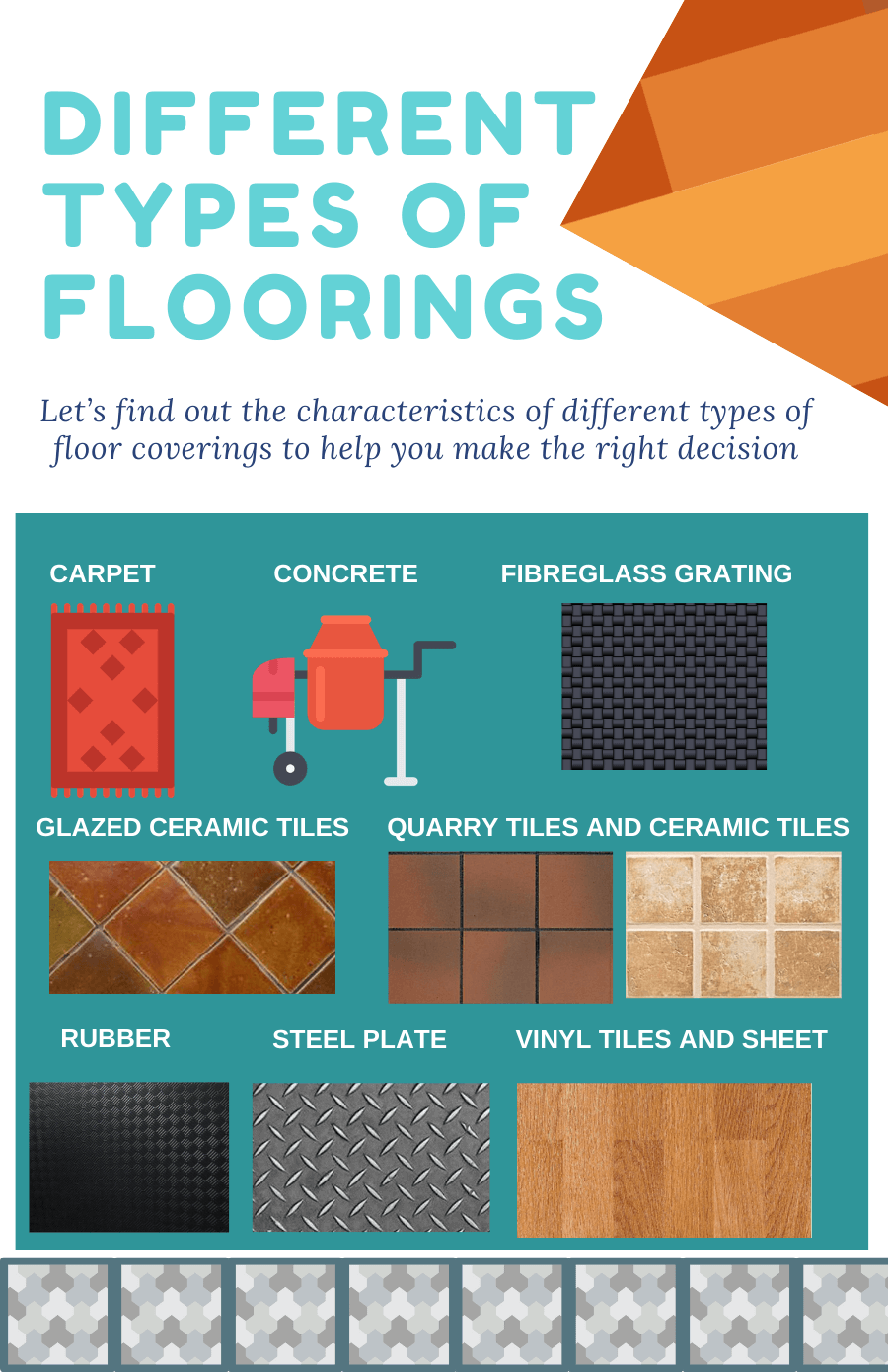Different Types of Floorings

Making the right choice from different types of flooring materials will make all the difference for your property. It plays an integral role in completing the total theme of interior whether it’s for your home or an office.
Every type of flooring material has a contrasting feel, looks, quality, and warmth. Depending on your budget, you can decide the flooring material which provides the desired level of comfort and aesthetics you want. Are you going for the customary or something like the best hardwood flooring in Singapore?
Let’s find out the characteristics of different types of floor coverings to help you make the right decision.
Carpet
Carpet has a shorter life than a hard floor surface but can be a cost-effective solution in many cases. Installation should be wall to wall to avoid the hazard of tripping on edges. When used in small local areas, such as entrances, it should be installed in a recess in the floor. Requires more effort for pushing or pulling tasks
Concrete
Rounded aggregate can be slippery when concrete wears. Interior surface is often sealed to prevent dusting and absorption of liquids but this can increase slipperiness for your outdoor decking in Singapore.
Fibreglass grating
This product can have grit particles moulded into the upper surface to provide very good slip resistance. Fluids are very quickly drained away.
Glazed ceramic tiles
Slippery when wet, particularly with soapy water. Some slip resistance treatments available but it is preferable not to install these products on floors
Quarry tiles and ceramic tiles
Low water absorption and good resistance to chemicals. Slippery in wet conditions if smooth but can be moulded with aggregate or profiles to improve slip resistance. Special cleaning equipment like a high-pressure water spray may be needed as a build-up of grease or dirt can make these tiles slippery.
Suitable for kitchens where hot spills might occur. Also appropriate for shower rooms and toilet. Needs frequent cleaning
Rubber
Less effective in wet conditions. Must be well fixed down at the edges and joins to avoid a tripping hazard. Ramps and areas requiring extra slip resistance, stair treads. Usually with round stud pattern.
Steel plate
Tends to be slippery when wet or oily, particularly when worn. Factory areas with very heavy traffic, or to span openings in floors. Usually with a raised pattern (for example chequer plate) which provides some slip resistance.
Vinyl tiles and sheet
Easy to clean. Use in sheet form where washing is required to avoid water getting under tiles. Slippery when wet, particularly if polished. Vinyl flooring in Singapore with aggregates moulded in is available. Thicker, softer vinyl is more slip-resistant than a hard vinyl. Light industrial environment, corridors and hospital wards. Not suitable where hot spills are likely to occur.



